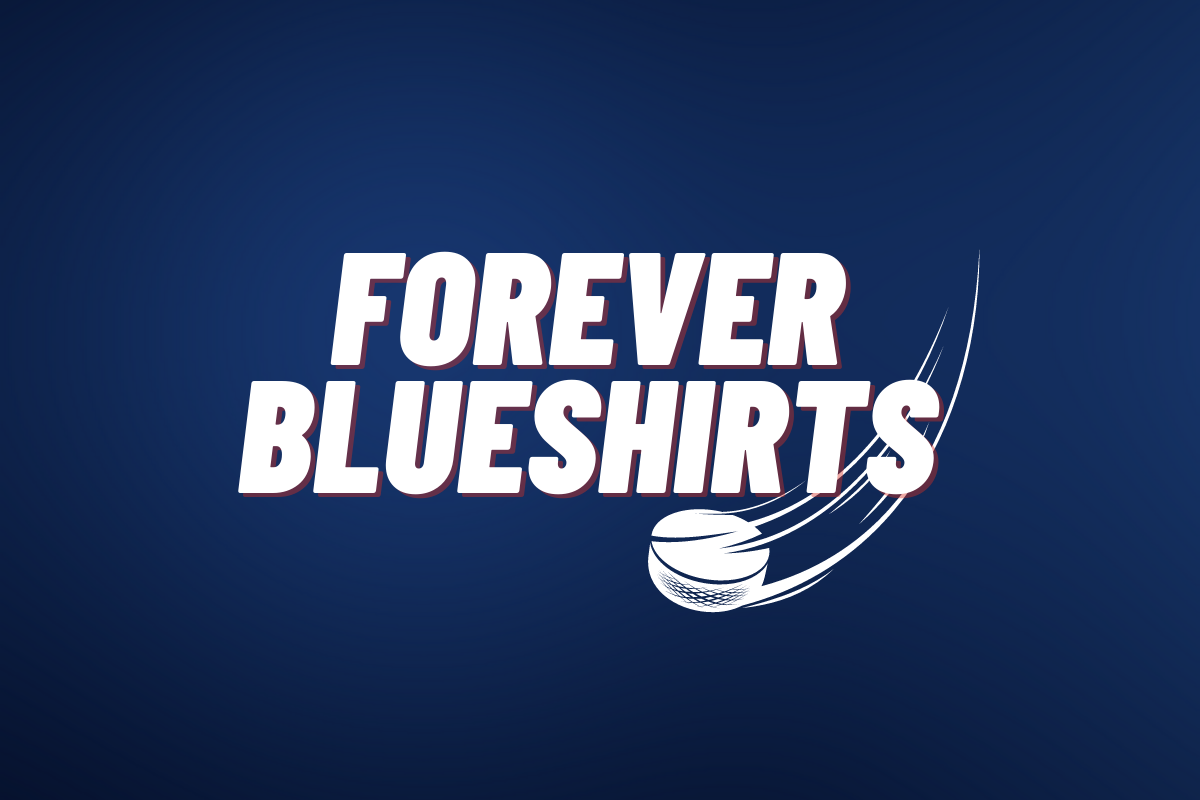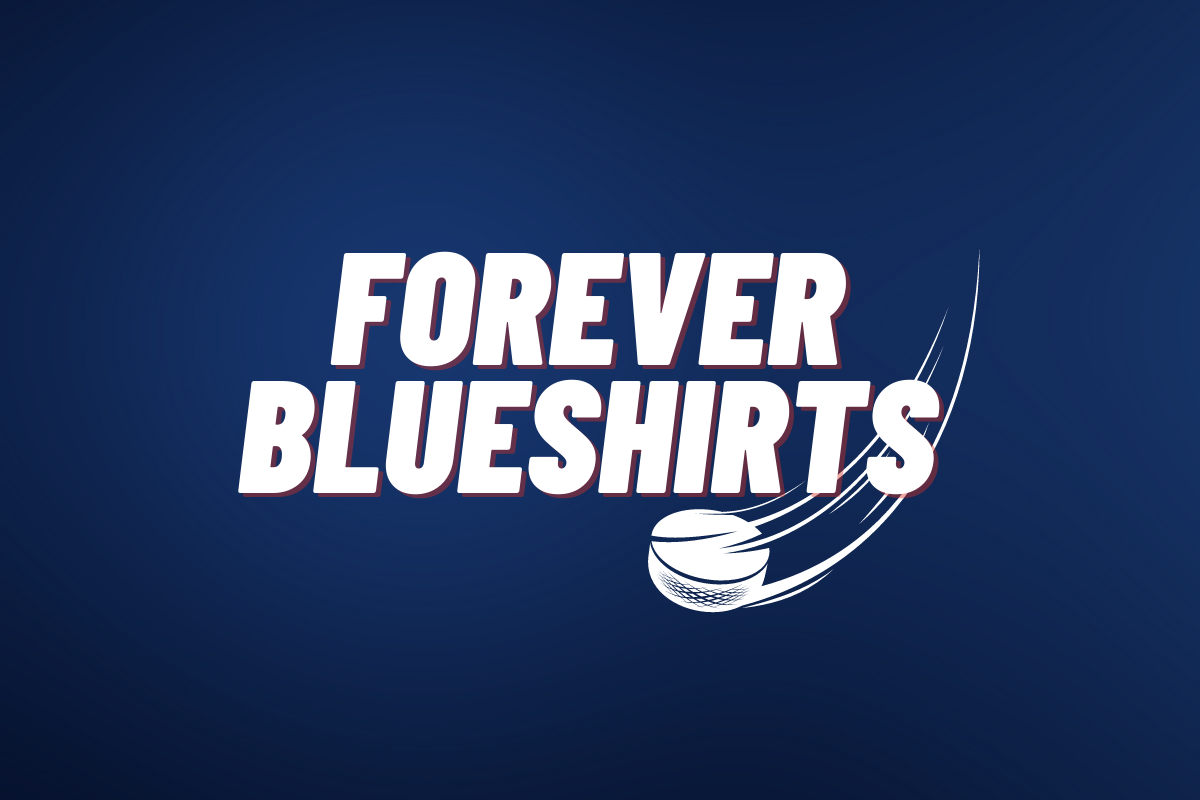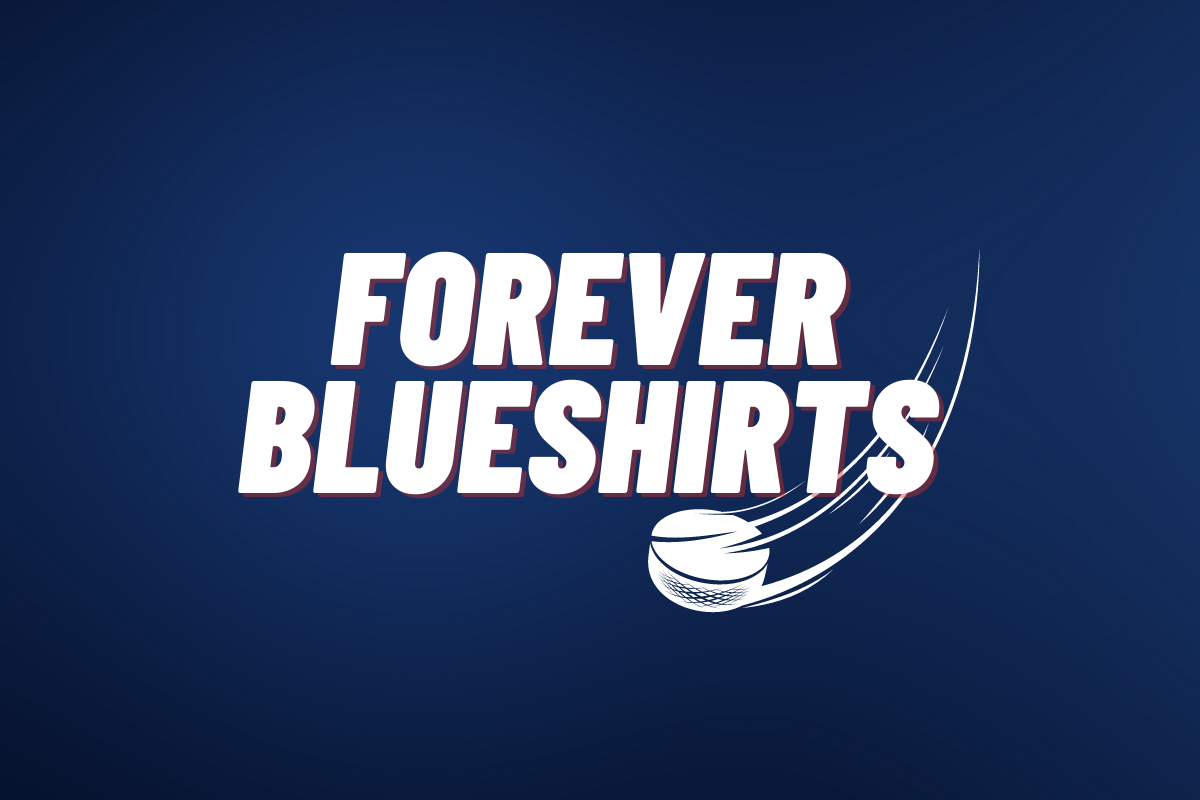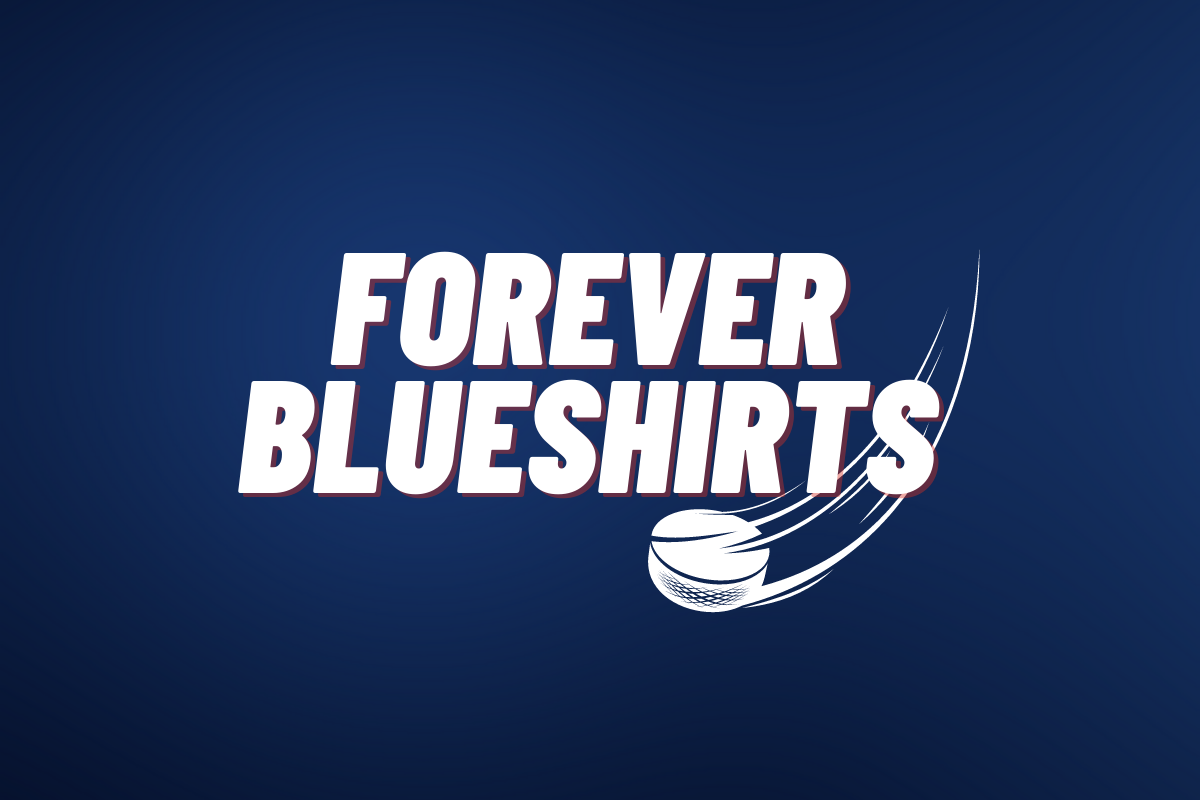No matter what the offer, the New York Rangers can’t pass on drafting Alexis Lafreniere
It’s been over 20 years since the last time an NHL team owned two of the first five picks in the draft. But that’s exactly the scenario the Ottawa Senators currently find themselves in thanks to the results of the Phase 1 lottery, which rewarded them with the third and fifth picks in the upcoming NHL draft.
As enviable a position as that may seem, the reality is that Ottawa did not win the No. 1 pick and the chance to nab consensus top prospect Alexis Lafreniere. That was in spite of having the greatest odds (25 percent) of any team participating. Naturally, the discussion in Ottawa immediately shifted from Lafreniere becoming a Senator to speculating the price it would cost to acquire him.
Do the New York Rangers have any doubts on who to take?
Last Monday, the second phase of the league’s revamped lottery system awarded the New York Rangers with the first overall pick. This made Lafreniere’s eventual destination far less ambiguous. Logic indicates that the Rangers will take advantage of grabbing a No. 1 pick for the first time since 1965, and that pick undoubtedly will be Lafreniere. But could there be an offer too good to pass up? What if the Ranger draft board, presumably completed before last Monday’s drawing, placed towering center Quinton Byfield or explosive German forward Tim Stutzle ahead of Lafreniere?
Whichever the case may be, the reality is that NHL front office types and scouting departments are incredibly reticent when it comes to going on the record about their draft-day intentions. Although the close-knit nature of the scouting community may make the process seem like a free-flowing marketplace of ideas and opinions, the exact opposite is closer to the truth.

Rangers not giving too much info away
In a conference call with Rangers beat writers on Monday evening, Rangers general manager Jeff Gorton gave little insight into what he had planned to do with the first pick. “I’m from the school of taking some time and let this all settle in,” Gorton said. “I wouldn’t want to give away exactly what is going to happen. We haven’t had the luxury of doing an interview with Alexis until we had the good fortune of winning the lottery. We’ll go through that process and start to meet the young man and go down the road of talking to him. Let’s go through that first.”
Of course, it is totally fair to speculate that it’s just a matter of time until Lafreniere dons the Rangers’ red, white, and blue. Others see it differently, however, as several factors can lead one to believe that the Rangers will not only receive lucrative offers from the majority of NHL teams, but that several teams with an abundance of assets can make it impossible for Gorton, team president Joh Davidson, and even owner James Dolan, to resist. Here’s what they’re saying:
Argument No. 1: The Rangers already have stars
Yes, the Rangers already have established stars in their lineup and are a borderline playoff team whether there’s a play-in round or not. Artemi Panarin, who like Lafreniere plays left wing, was one of the league’s top scorers, and center Mika Zibanejad was fifth in goal scoring with a career-best 41 tallies. Both are under 30 years of age and under contract for at least two more seasons. Still, the production of neither player should not supersede the desire to improve a hockey team and give fans the opportunity to enjoy the career of a home-grown superstar they can call their own.
Argument No. 2: Two premier draft prospects are better than one
This logic might brief well, but in the end, it’s an easy one to shoot down. First off, it’s no mystery that the Blueshirts already own one of the NHL’s deepest prospect pools. They just drafted Finnish sniper Kaapo Kakko after winning the second pick in last year’s lottery. Plus they possess some of the game’s top young talents in defenseman Adam Fox, goalie Igor Shestyorkin, and 2018 top-10 pick, right wing Vitaly Kravtsov.

The pipeline is loaded with defense prospects and goalies, and former first-round picks Filip Chytil and Brett Howden, plus Swedish playmaker Karl Henriksson, gives the organization balance down the middle. Additionally, the Rangers own Carolina’s first-round pick in 2020 via the Brady Skjei deal, plus extra mid-round picks in the 2021 draft and the benefit of losing three hefty veteran contracts within the next year.
The Rangers are expected to be armed with cap flexibility to go along with hyper-competitive battles at every position and at every level, in addition to already possessing a bonus first-round pick in 2020. There is far more risk involved in passing on Lafreniere for the sake of adding an extra prospect or two. Consequently, both prospects would undoubtedly trail Lafreniere in the upside department — to an already overcrowded pool.
Argument No. 3: The Rangers need NHL-ready centers, not more wingers
Another argument being thrown around that tries to rationalize the Rangers trading down or passing on Lafreniere is their perceived weakness at center beyond Zibanejad. Not only is the aforementioned Byfield the top center prospect available, but he has drawn comparisons to Pittsburgh Penguins star Evgeni Malkin and Anaheim Ducks pivot Ryan Getzlaf. Although Ottawa seems like a top trading partner because of its own deep pool and pair of top-five picks, the Los Angeles Kings also have a wealth of assets in addition to owning the No. 2 pick in 2020.
The Kings have just as deep a farm system as the Rangers or the Senators, except theirs is loaded with centers. If the Kings thirst for Lafreniere more than a center like Byfield, it’s conceivable to see a deal being worked out where the Kings would not only swap draft spots with the Rangers but also throw in an extra pick as well as one of their young pivots like Alex Turcotte, Rasmus Kupari, or Gabe Vilardi.
The problems with a scenario based on positional need are multi-fold. First of all, trading down from No. 1 would be setting a post-lockout precedent. It hasn’t been done since 2003, and the Rangers would not only have to sell the return to owners, but also to new season ticket holders who bought packages thinking they’ll be watching Lafreniere next season.
Second, the Rangers have a checkered history of drafting for need under the guise of “best player available.” They drafted goalies in the top 10 in Dan Blackburn (2001) and Al Montoya (2004) in an attempt to find Mike Richter’s successor.
In 2006 and 2008, they grabbed offensive defensemen Bobby Sanguinetti and Michael Del Zotto, respectively, to address a hole left by the trade of Brian Leetch in 2004. In 2010, the Rangers took a huge gamble on physical defenseman Dylan McIlrath at 10th overall, probably after seeing a goon like Dan Carcillo beat up on star Marian Gaborik with his teammates not lifting a finger to help.
And the over-drafting of Lias Andersson at seventh overall in 2017 was summed up best by scouting director Gordie Clark, who stated “we really needed a certain kind of player to add into our organization, and this guy’s work ethic…he’s got the combination of the grit and ability we’ve been looking for.” So if drafting for need in the top 10 or 15 is a process full of incredible risk, then you can only imaging the long-term blowback from doing the same with a first overall pick.
Argument No. 4: Byfield is the better prospect
Every year seems to have a “who’s No. 1” debate that usually begins in the summer prior to a given draft season. For this argument to maintain momentum throughout the campaign, several things need to happen.
Under standard conditions, the preseason favorite expected to go No. 1, which in this case would be Lafreniere, has to be either matched or overtaken by someone else in key statistical categories; matched or outplayed in a tournament or head-to-head matchups; or suffer from a red flag or two (injuries, personal issues, etc.) that raises doubts about his potential.

Since both Lafreniere (QMJHL) and Byfield (OHL) are Canadian-trained forwards playing in the CHL, this type of line-by-line comparison is easier to execute than say, a European defenseman versus a North American forward. Therefore, knowing that both Lafreniere and Byfield are operating with a clean slate and with no significant advantages in quality of competition or teammates, it’s easy to shoot down any idea that Byfield has the more impressive pre-draft resume and has proven to show higher upside.
- League production: Lafreniere was the leading scorer in the QMJHL with a 2.15 points-per-game average. Byfield finished sixth in the OHL with a 1.82 average. Lafreniere also was named the QMJHL Most Valuable Player and the CHL Player of the Year; Byfield was named to the OHL’s Third All-Star Team.
- Prospect Showcases: Both Lafreniere and Byfield participated at the under-18 Ivan Hlinka as 17-year-old prospects. Since Lafreniere was born late in 2001, he was eligible to play in the 2018 competition, whereas Byfield, born in 2002, played in 2019. Lafreniere not only tied for the tournament lead in scoring (11 points in 5 games), but he also helped Canada win gold. Byfield in 2019 was third in team scoring (5 points in 5 games) and the Canadians settled for silver. At this year’s under-20 world junior hockey championship, both forwards made Team Canada, and Lafreniere once again served in a top-line role and led a tournament in points-per-game average (2.00) to win the MVP award in leading Canada to a gold medal. Byfield had only one assist in seven games while serving on the fourth line.
- Red flags/injuries: Neither player has been found to have any issues in terms of coachability, work ethic, or concerns off the ice. Although Lafreniere’s playing style is more demonstrative and energetic than Byfield’s often methodical approach, both players have elite hockey IQ’s and contribute away from the puck. If there are any concerns surrounding Lafreniere, they’ll probably center an occasional over-eagerness to play physical and subsequent breakdowns in discipline and temperament. For Byfield, a perceived lack of intensity and quietness are somewhat overstated as he still was able to exact his will against opponents with little opposition. The bottom line is that neither player has either a red flag or injury concern valid enough to hold water in a player-vs-player debate.
As you can see, from a draft resume standpoint, Lafreniere is the clear-cut winner. The idea that a center with size and skill trumps a winger of any size or skill is tough to justify when you consider five of the NHL’s top-10 scorers from this past season – Panarin, Nikita Kucherov, Patrick Kane, Brad Marchand, and David Pastrnak – are listed as six feet tall or under, whereas the five remaining scorers were big-bodied centers – Leon Draisaitl, Connor McDavid, Jack Eichel, Nathan MacKinnon, and Auston Matthews.
Argument No. 5: Picks 3 & 5 combined are more valuable than No. 1
This is a video-game scenario that has picked up steam on the blogosphere for some time, but the fact remains — no team has ever traded out of the first overall pick in the salary cap era. Although Ottawa as of now is the first team since 1999 to have two picks within the top five of the draft, the idea of trading oneself out of the No. 1 pick for such a package has yet to graduate from the planning or discussion phase to actual execution in almost two decades, and for good measure. Of course, these types of deals were more common in the pre-salary cap days when playoff-starved teams at the bottom of the NHL standings, desperate to make a long postseason run, found dealing first-round picks far more negotiable.
Knowing that, let’s take a look at the few times in NHL draft history where this option was a possibility. Keep in mind that the 1998 draft saw the No. 1 overall pick traded several times but those deals were made before the final draft order was established.
1988: Minnesota at No. 1; Quebec owns third and fifth overall picks
This draft should mean something to older Rangers fans, because Quebec added the fifth overall pick as compensation from the Rangers for hiring Michel Bergeron as head coach.
As much as we should be thankful for Bergeron helping Brian Leetch’s early development (and he very much did so), the truth is that one of Teemu Selanne, Rod Brind’Amour, or Jeremy Roenick would have been available to the Rangers had they been able to keep the pick. The Nordiques ended up selecting defenseman Curtis Leschyshyn with pick No. 3 and winger Daniel Dore at No. 5. Good thing the Minnesota North Stars didn’t move down from first overall, otherwise they would not have drafted perennial all-star Mike Modano.
1994: Florida has No. 1 overall; Edmonton owns fourth and sixth picks
The 1994 draft wasn’t considered as deep as the 1993 group, but defenseman Ed Jovanovski was viewed as a prime candidate for the No. 1 pick since he was by far and away the top North American-trained rearguard. Florida in 1994 owned the top pick after they selected center Rob Niedermayer the previous year, and all signs pointed to the expansion Panthers going for the defenseman.
The Oilers under then GM Glen Sather started their rebuild at the 1993 draft with big center Jason Arnott, but Sather doubled down a season later by going with big forwards with each of his high picks – center Jason Bonsignore and winger Ryan Smyth. Bonsignore never made it past 79 games but Smyth was an excellent choice and played in 1270 NHL games. As for Jovanovski, the big blueliner was the centerpiece of the package sent to vancouver for Pavel Bure in January of 1999. As a Canuck, Jovanovski became one of the game’s top defenders, so Smyth vs. Jovanovski debate would be an interesting one. Nonetheless, it’s safe to say the Panthers were correct in keeping the pick.
Check out Fanatics! 30% Off Sale Going on Now!
Fanatics is having a 30% off sale when you use the CODE: ICING. Grab some NYR gear today.
1997: Boston owns No.’s 1 and 8; Islanders own No.’s 4 & 5
There was little doubt that center “Jumbo” Joe Thornton would be the first pick in the 1997 draft; a situation similar to that of Lafreniere. The field in 1997 was relatively thin at every position, but the general feeling was that the superior quality of forward talent in the top 10 was on par with 1993 (in fact, it turned out to be better). The Boston Bruins owned the first and eighth selections, while the Islanders had No.’s 4 and 5. The B’s, who were fresh off their worst season in almost 30 years, were tight lipped about their intentions despite speculation that all options, to include trading the top pick, should be in the table.
Since the Bruins owned a second top-10 pick, the idea of trading down probably made little to no sense to Bruins GM Harry Sinden, as their primary target for pick No. 8 — forward Sergei Samsonov — was expected to be available after the Islanders made their two selections with the fourth and fifth pick. Standing pat ended up working out for both Boston and the Islanders, as the Bruins grabbed Thornton and Samsonov, and the Isles picked future star goalie Roberto Luongo and defenseman Eric Brewer.
1999: Tampa trades down from No. 1 to No. 4, then out of the first round entirely
The level of uncertainty surrounding the 1999 draft crop was higher than in previous years for several reasons. For starters, there wasn’t a consensus top pick such as 1997 (Thornton) and 1998 (Vincent Lecavalier). Furthermore, the draft’s lack of elite defense prospects increased the likelihood that teams that were looking for scoring would reach on a forward. But the biggest issue surrounding the 1999 group was that one of the better prospects — center Patrik Stefan — not only had a history of concussions, but his agent Rich Winter allegedly would not release his client’s medical records to inquiring GM’s.
In an era where goaltending and tight checking reigned supreme, the lure of adding a scoring center like Stefan was significant, just as much as it was to acquire premier 1999 draft prospects Daniel and Henrik Sedin as a package deal.
In any event, Tampa was willing to move the pick because they had little interest in Stefan. They already drafted a top defense prospect in 1997 (Paul Mara), picked offensive forwards Vincent Lecavalier and Brad Richards in 1998, and were still willing to wait out the development of former first-round picks Jason Wiemer (1994) and Daymond Langkow (1995), both of whom were forwards.
Thus, Tampa Bay under the command of GM Jacques Demers were no longer interested in rebuilding and wanted to challenge for a playoff spot in 1999-2000. In one of the wildest examples of draft-pick shuffling you’ll ever see within the first five selections, the No. 1 overall pick changed hands three times in less than 24 hours, beginning with the Lightning switching with Vancouver (which owned No. 4 overall) for picks No. 75 and 88 in the third round. The Canucks, who already owned the No. 3 selection, had previously acquired the fourth overall pick from Chicago earlier in the day.
Vancouver’s intent was to draft the Sedins as a package deal, and Atlanta GM Don Waddell, who had the second pick in the draft but wanted Stefan, was willing to trade down one spot with Vancouver at the low cost of a conditional third-round pick the following season.
But Tampa was far from done. Sticking to ownership’s edict of building a contending team, Demers was able to ship the No. 4 pick to the New York Rangers for a package of established NHL’ers — two-way winger Niklas Sundstrom and goalie Dan Cloutier — and New York’s 2000 first-round pick.
The Rangers went on to draft one-dimensional sniper Pavel Brendl, and the Lightning went from owning the top choice in the draft to all the way down to the second round. In the end, the only true winner from these moves was Vancouver, which came away with the Sedin twins. As for Stefan and Brendl, both became busts for the Thrashers and Rangers, respectively, and neither team qualified for the playoffs for several seasons thereafter. But the biggest loser of them all was Tampa, which got next to nothing out of Sundstrom, Cloutier, nor the 2000 first rounder, which the Bolts used to select Nikita Alexeev eighth overall.
2002: Florida trades down from No. 1 to No. 3 overall
The Panthers owned the top pick but traded down on draft day with Columbus, which owned the No. 3 pick. The deal was simple – Florida moves from No. 1 to No. 3 for the option to swap 2003 first-round picks with the Blue Jackets. Pivotal to this was the expected strength of the 2003 draft class, which even without the benefit of hindsight was one of the deepest in league history. Unfortunately for the Panthers, they finished with a worse record than Columbus in 2002-03, thus making the swap condition irrelevant. More on that in a minute.
Although the Panthers traded out of the No. 1 draft spot and the chance to draft scoring winger Rick Nash, they did end up drafting Jay Bouwmeester, who went on to have a successful career in South Florida. Panthers GM Rick Dudley claimed all along that Bouwmeester was his guy, while Columbus GM Doug MacLean said the same about Nash. In hindsight, Florida probably would have been better suited taking a goal-scoring winger like Nash over Bouwmeester, who struggled with consistency and was traded to Calgary after six playoff-less seasons.
2003: Florida trades down from No. 1 to No. 3 overall
No, your eyes are not deceiving you. Just as in 2002, the Panthers went into the draft with the No. 1 pick, only to trade down to No. 3. This time, it was the Pittsburgh Penguins who locked their sights on a prospect that Florida didn’t have much use for. You see, the Panthers already acquired a young Roberto Luongo from the Islanders several years prior and were not keen on using the top selection on goalie Marc-Andre Fleury, who was compared to Martin Brodeur and like Luongo, viewed as a potential superstar.
After learning his lesson from the 2002 draft-day deal that did not fetch him additional assets, Dudley orchestrated a trade with Pittsburgh to swap picks plus acquire veteran winger Mikael Samuelsson and a late second-rounder. Both parties were given high marks at the time of the trade, although neither Samuelsson nor the extra second rounder (journeyman Stefan Meyer) gave the Panthers much in return.
In hindsight, this move was another example of Dudley tinkering with fate, and he not only traded out of the top spot, but also gambled on forward Nathan Horton over the higher-rated Eric Staal. Although Horton was a good player whose career was cut short by injuries, Staal went on to register eight seasons of 70 points or more compared to none for Horton.
Alexis Lafreniere should be a NYR
There isn’t one example since the post-WHA merger of 1979 where moving the first overall pick at the draft yielded a result that favored the team trading down. It should also be noted that the last two GM’s to do so – Tampa’s Jacques Demers in 1999 and Florida’s Rick Dudley in 2002 and 2003 – were fired within two years of making such moves. In summation, Rangers should keep the pick, and that pick obviously should be Alexis Lafreniere.
Follow Steve on Twitter @TheDraftAnalyst
More About:NYR Features

